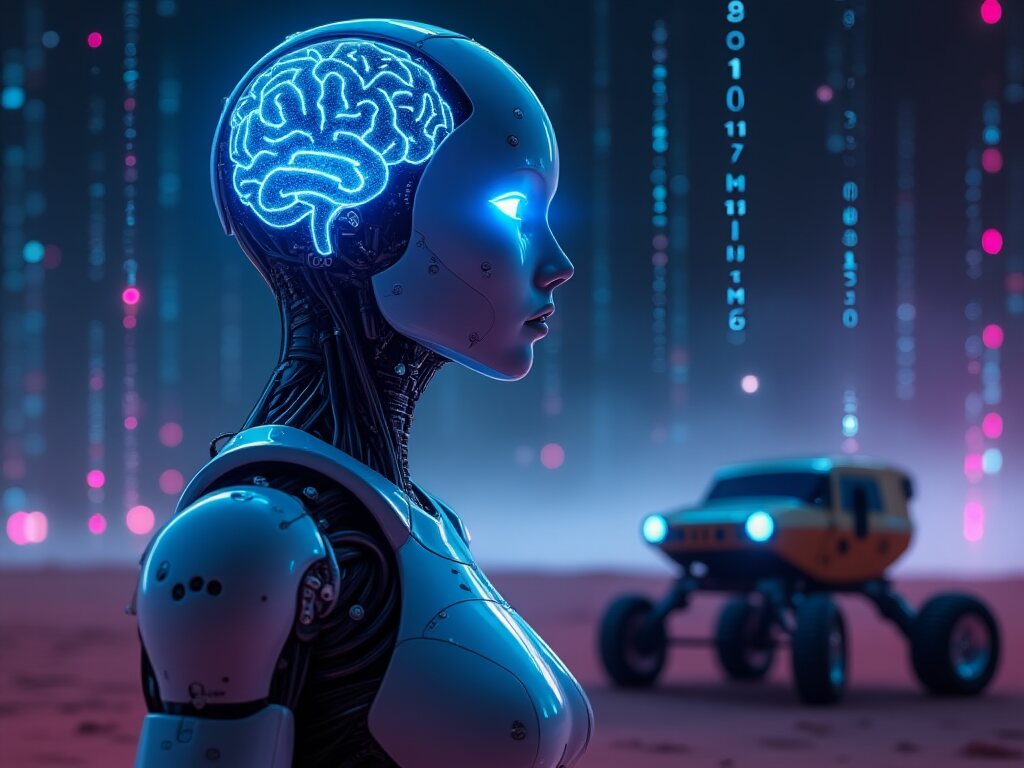
Introduction: The Need for Speed in Robotics
Imagine that the reaction time of a self-driving car to an unpredictable obstacle is, not in seconds, but in nanoseconds. Or even a robotic scalpel calculating its cuts in real-time according to the stimulus of the tissue. The speed constraints of classical computing are a wall modern robots cannot surpass no matter how advanced they are.
Yet, quantum computing is soon going to break through that limitation. Using qubits, which can be in more than one form at a given time, the robots would have the capability to process huge amounts of data and make sophisticated choices within a blink of a second. No lag, no buffering, no impurity, no filtration, reaction only.
That is sci-fi talk. It is being done in labs already. The question that matters most is, are we prepared to have machines that are quicker than we are in thinking?
The Problem: Why Today’s Robots Are Still “Slow”
Another example is even the most futuristic and sophisticated robot, such as Atlas by Boston Dynamics, uses pre-programmed responses and not actual real-time adaptation. The bottleneck? Classical computing. Conventional processors perform tasks in a sequential way and this requires AI to trade off the speed and accuracy.
- To exemplify, a 2023 study by MIT ascertained that neural networks added 20-50ms to robot decision-making, which can kill in the high-velocity context of autonomous driving.
- Another impediment is the training of AI. The contemporary machine learning algorithms can be taught in weeks or months. Quantum computing can shrink such a timeline to hours by doing all the possible options simultaneously.
The largest failure of robotics is what is referred to as the gap between sensing and acting. The band-aid could be quantum tech.
How Quantum Computing Changes Everything
In contrast to classical bits (0 or 1), qubits take advantage of the quantum physics to be in superposition- that is they can be 0, 1, or both. This enables quantum computers to do calculations exponentially.
- In 200 seconds, the Sycamore processor of Google could fix a problem that a supercomputer would take 10,000 years.
- The most recent quantum system by IBM (2024) has demonstrated 127-qubit coherence and this is bringing us one step closer to practical applications.
In the case of robots, it implies real-time path planning, dynamic object recognition, and immediate failure prediction, that is, no longer time outs to the cloud server or to a human operator.
Real-World Breakthroughs: Where Quantum Meets Robotics
The Quantum-powered Mars rover is made by NASA
NASA is working to have future Mars rovers prioritize their activities themselves using a quantum-enhanced AI that is being tested at the Jet Propulsion Lab. Currently, it takes 20 mins to transfer commands to Mars, decision-making involving quantum could make that wait disappear.
Startup Spotlight: Quantum Motion’s Edge AI Chip
UK company Quantum Motion has a device en route, a quantum processor that can be shrunk to fit into drones and robots and make offline instantaneous decisions. Think of search-and- rescuer bots that can explore fallen buildings without having to await the control of remote managers.
The twist is, however, quantum decoherence. The qubits are highly delicate and any slight disturbance can cause the calculations to crash. says Dr. Michelle Simmons (UNSW): “We are still in the vacuum tube quantum computing era.”
The Dark Side: Risks of Instantaneous Robot Decisions
Being fast is not always a good thing. What happens in case of:
- The drone is part of a military that makes a lethal call, faster than a human can override?
- Markets go down in milliseconds due to a stock-trading bot with enough quantum power?
According to an IEEE survey carried out in 2024, 68 percent of roboticists were afraid that quantum AI would advance faster than human control. And as China and the U.S. spend billions to invest in quantum research, the race is on, and there is no safety net.
The Future: When Will Quantum Robots Arrive?
Experts predict:
Operational personalised, sovereign health – 2025-2030 Control (acquisition od total solutions) Operational quantum-classical robots (e.g. warehouse logistics).
2030+: Medicine and the use of autonomous quantum robots in surgery, space exploration etc.
However to put it in my own words, we are emphasizing a bit too much on speed and not much on control. The quantum robotics is the potential industrial revolution or the next Sky net. It is up to us.
Final Thought: Should We Hit the Brakes?
Robots fed by quantum energy will make fast decisions with a precision that can never be beaten and their efficiency will be that of super-humans. But what will the price be? Unless we build in ethical safeguard mechanisms today, we could end up building the machines that are smarter than us in every way.
What now sayest thou? To go with the full steam, or take a halt and think over the dangers? Leave your comments down below.